Artist Dale Klein makes collagraphs and etchings that express how the works of man are inevitably overwhelmed by the forces of nature. Visit her website to learn more.
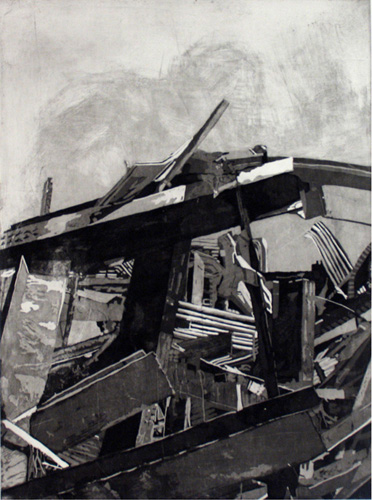
“Kodak Demolition” Aquatint, 18″ x 24″
Using traditional print methods of etching and collagraphy, I create powerful images of post-industrial landscapes which have been abandoned and are being reclaimed by nature.
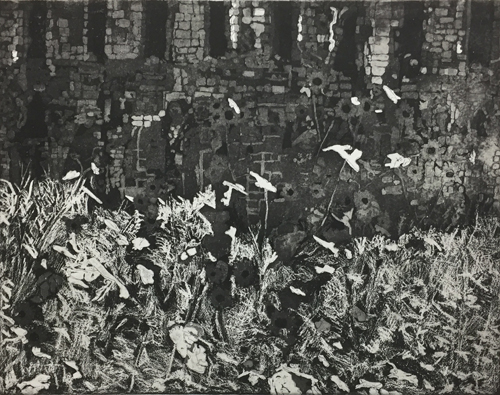
“Coke Furnace and Wildflowers” Aquatint, 14″ x 11″
I love entropy and deterioration. I see it as inevitable and beautiful in a melancholic way.
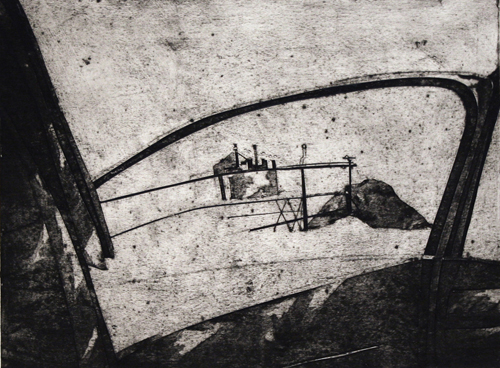
“Car Door” Collagraph, 40″ x 30″
Having been born and raised in western New York state, I have watched as my home has gone from a booming industrialized area to part of the “rust belt”. What fascinates me is that no matter how much man tries to conquer his environment, nature inevitably wins.
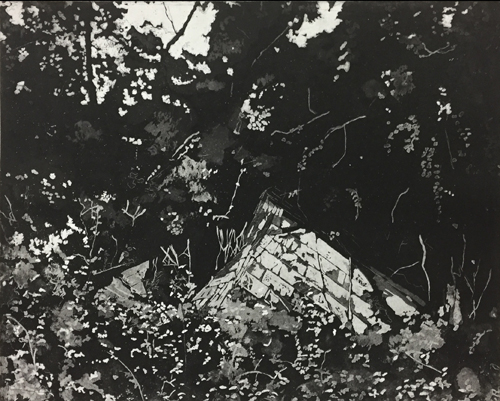
“Decayed” Aquatint, 20″ x 16″
This is illustrated beautifully by the post-industrial landscape in rural and urban areas that surround me. I see ruins of farms as well as industrial complexes that are abandoned and have either decayed or have been demolished.
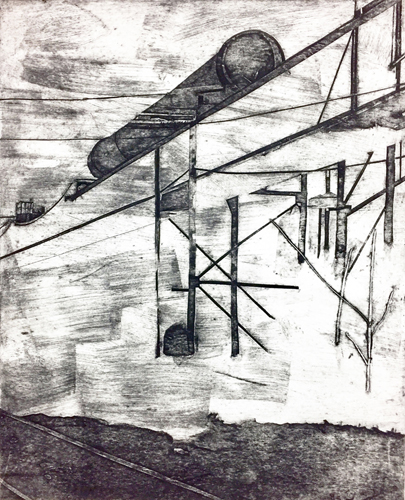
“Bethlehem Lackawanna” Collagraph, 16″ x 20″
I have always been an artist. I drew incessantly as a child. I wanted to go to art school but was afraid that either I would not be good enough or I would end up living in my parents’ basement.
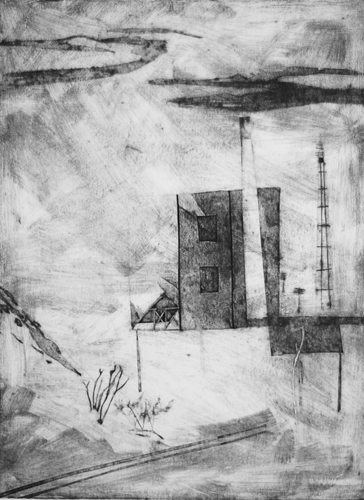
“Bethlehem Steel” Collagraph, 30″ x 40″
After twenty-five years as a clinical social worker, I decided to go to art school when my daughter told me that I could not let my fears stop me from doing something I wanted to do. Our words to our children often come back to haunt us. I received my BS in Studio Art in 2006 and an MFA from Rutgers in 2010.
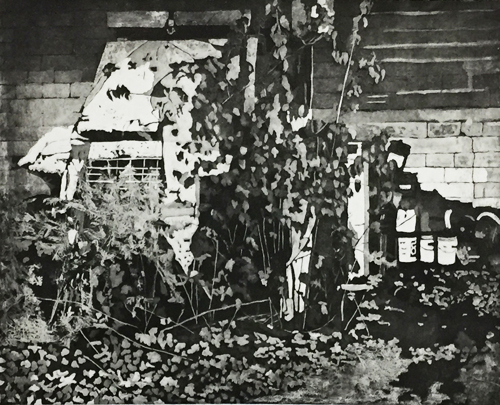
“Loader and Paint Cans” Aquatint, 20″ x 16″
I was immediately drawn to printmaking during my undergraduate studies. The process of printmaking is very indirect, and this helps me to be free to create without worrying how it will come out.
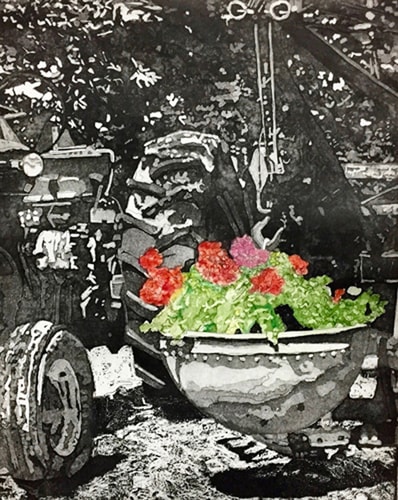
“Geraniums and Tractor” Color Aquatint, 11″ x 14″
The pulling of the print can be thrilling (or devastating) as I never know exactly what it will look like. My primary printmaking techniques are traditional etching and collagraphy.
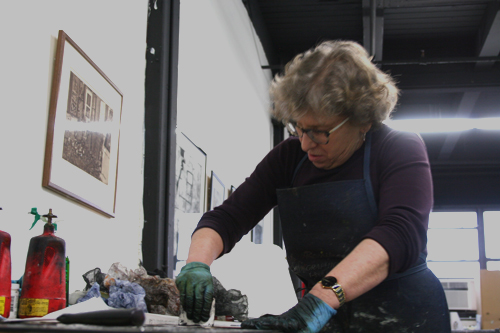
Artist Dale Klein at work in her studio
I work and rework each plate sometimes until the plate has deteriorated as much as the industrial landscapes I am drawn to. My etchings are mostly aquatints in which I use spray paint or powdered rosin to create a halftone on the copper plate. I then stop out with a tar-like substance many times as I dip the plate into a solution of ferric chloride to get a large variety of tones. For my collagraphs, I use an X-acto knife to cut into cardboard, which I then print.
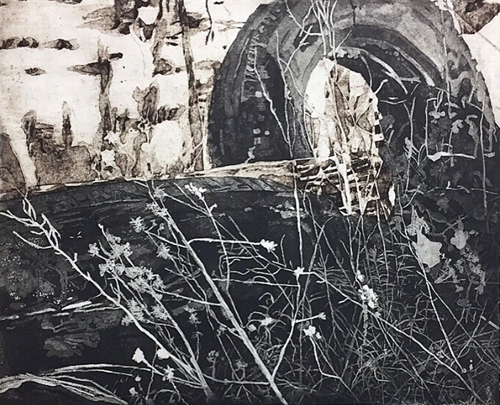
“Tires Lackawanna” Collagraph and Aquatint, 20″ x 16″
I work on the edge of hyperrealism and abstraction. One of my goals as an artist is to make my work as interesting as possible, inviting the viewer to spend time with the work. It is important to me to have “moments” in my pieces—a line there, a tone here—where someone can find a little piece of beauty.
Artist Dale Klein invites you to follow her on Instagram and Facebook.


Speak Your Mind